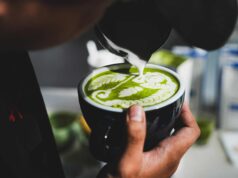Dairy farmer Herson Alfonso of Sibut,San Jose City feeds his dairy calves with native napier grass. He says he is eager to plant super napier grass as it is a refuted to contain more crude protein than his common napier grass.
PHOTO BY ELMO ROQUE
SCIENCE CITY OF MUÑOZ – For the super carabaos, whose female needs lots of appropriate feed in order to achieve its optimum potential to milk, the super grass is offered by experts.
The super carabaos are the dairy carabaos, either purebreds or crossbreds, which are much bigger and meatier than the native carabaos. Their female yields, when given the right nutrition, from 12 to 17 liters of milk a day compare to the native’s one and a half liters a day.
The grass called “Pachong 1” is a hybrid that packs a wallop in terms of crude protein content compared to the common napier grass found in the country and fed to the animal on a cut and carry basis.
“It has 16 to 18 percent crude protein,” Dr. Krailas Kiyothong of the Department of Livestock Development of Thailand said in a technical seminar at the Philippine Carabao Center (PCC) here recently. The ordinary napier grass has a crude protein percentage of only 8 to 12 percent.
The Thai expert developed the super grass in six years of studies. He said it is a cross of the ordinary napier grass (Pennisetum purpureum) and pearl millet (Pennisetum glaucum). In his presentation before PCC officials and dairy farmers in Nueva Ecija, Kiyothong described other advantages of his developed grass over the ordinary napier grass.
Aside from its high protein content, the super napier grass, he said, grows faster and is taller compared to the ordinary napier grass. In Thailand, he added, a one hectare land produces 360 t0 400 tons which is enough to feed 50 dairy animal like cows and dairy buffalo.
“It is palatable for the dairy animal because its stalk is tender and juicy,” he said. Kiyothong added that the super napier grass can be ratooned for even up to eight years of proper management. This means, he said, that once established in the field, the plant regrows after each cutting. Harvesting can be as often as every 45 to 48 days.
This super grass is also deemed beneficial to cattle, goats, sheep and other ruminants. Dr. Felomino Mamuad, officer-in-charge of the PCC, said that his agency will establish a plantation here of the super grass to conduct additional studies for its adaptability under Philippine conditions and to determine further the benefits that it can provide to the herd of buffaloes at PCC.
After that, its promotion and commercialization can be done for use by the thousands of dairy farmers not only in Nueva Ecija but elsewhere in the country. “Before we commercialize it, we will study first its cultural requirements from planting to harvesting, analyze its nutritional benefits to our animals, and how best it can be propagated and used by the farmers in the simplest way,” Mamuad said.
When he assumed office last January, Mamuad said that the PCC will focus on helping farmers provide nutritional intervention for their dairy animals. “Right nutrition is essential in increasing the productivity of buffaloes for milk, which will eventually lead to higher incomes of the farmers,” Mamuad said.




